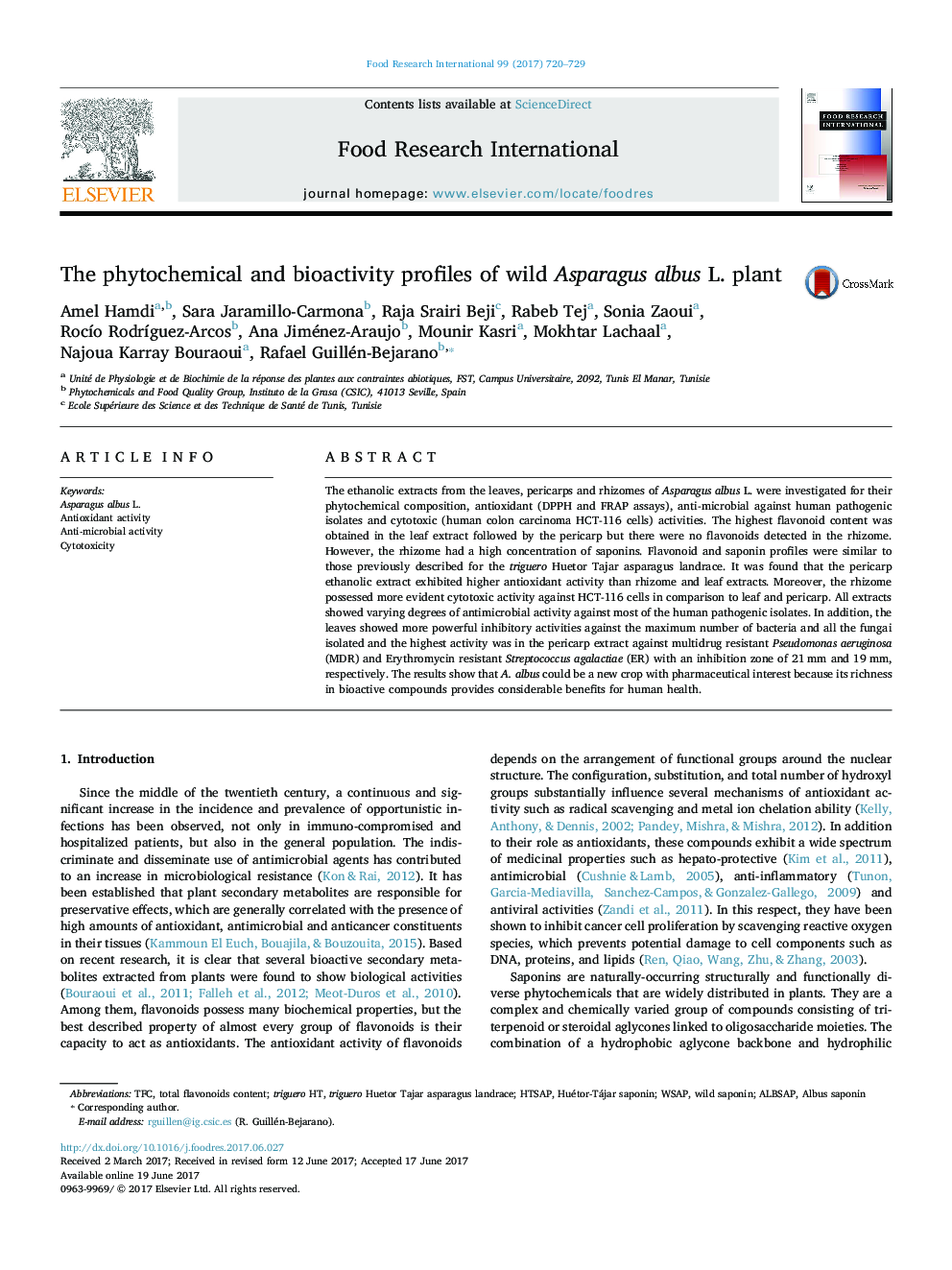| کد مقاله | کد نشریه | سال انتشار | مقاله انگلیسی | نسخه تمام متن |
|---|---|---|---|---|
| 5768149 | 1413213 | 2017 | 10 صفحه PDF | دانلود رایگان |

- Leaves and pericarp are rich in flavonoids.
- No flavonoids were detected in rhizome while its saponin concentration was very high.
- Pericarp ethanolic extract exhibited higher antioxidant activity than rhizomes and leaves extracts.
- Rhizome possessed more evident cytotoxic activity against HCT-116 cells.
- All extracts show varying degree of antimicrobial activity against most of the human pathogenic isolates.
The ethanolic extracts from the leaves, pericarps and rhizomes of Asparagus albus L. were investigated for their phytochemical composition, antioxidant (DPPH and FRAP assays), anti-microbial against human pathogenic isolates and cytotoxic (human colon carcinoma HCT-116 cells) activities. The highest flavonoid content was obtained in the leaf extract followed by the pericarp but there were no flavonoids detected in the rhizome. However, the rhizome had a high concentration of saponins. Flavonoid and saponin profiles were similar to those previously described for the triguero Huetor Tajar asparagus landrace. It was found that the pericarp ethanolic extract exhibited higher antioxidant activity than rhizome and leaf extracts. Moreover, the rhizome possessed more evident cytotoxic activity against HCT-116 cells in comparison to leaf and pericarp. All extracts showed varying degrees of antimicrobial activity against most of the human pathogenic isolates. In addition, the leaves showed more powerful inhibitory activities against the maximum number of bacteria and all the fungai isolated and the highest activity was in the pericarp extract against multidrug resistant Pseudomonas aeruginosa (MDR) and Erythromycin resistant Streptococcus agalactiae (ER) with an inhibition zone of 21Â mm and 19Â mm, respectively. The results show that A. albus could be a new crop with pharmaceutical interest because its richness in bioactive compounds provides considerable benefits for human health.
247
Journal: Food Research International - Volume 99, Part 1, September 2017, Pages 720-729